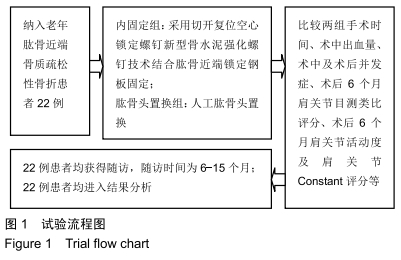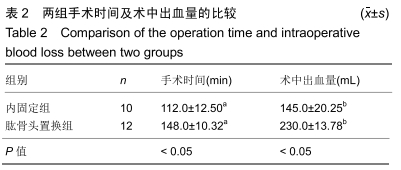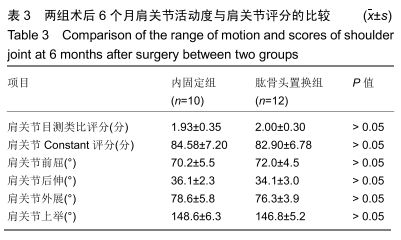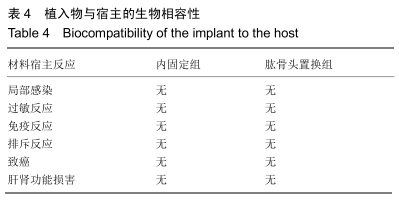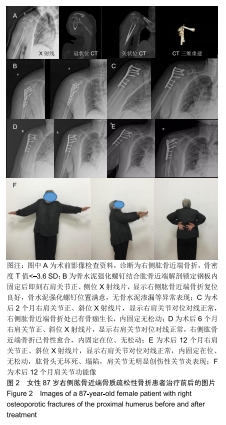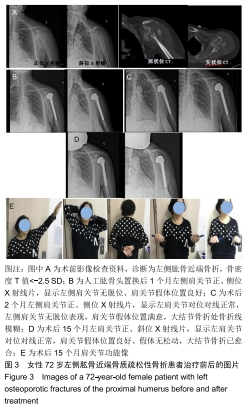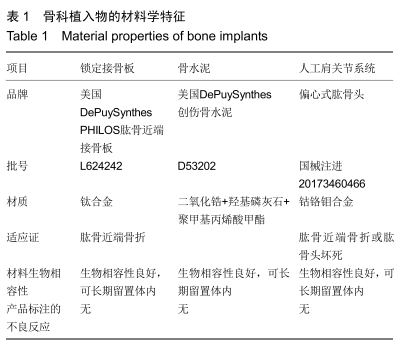[1] JABRAN A, PEACH C, REN L. Biomechanical analysis of plate systems for proximal humerus fractures: a systematic literature review.Biomed Eng Online.2018;17(1):47-54.
[2] 江红卫,曹烈虎,宋绍军,等.纳米人工骨与同种异体骨植骨治疗肱骨近端Ⅲ、Ⅳ型骨折的临床疗效对比[J].上海医学,2012, 35(11):954-956.
[3] PLATH JE, KERSCHBAUM C, SEEBAUER T, et al. Locking nail versus locking plate for proximal humeral fracture fixation in an elderly population: a prospective randomised controlled trial.BMC Musculoskelet Disord.2019;20(1):20.
[4] FATTORETTO D, BORGO A, IACOBELLIS C. The treatment of complex proximal humeral fractures: analysis of the results of 55 cases treated with PHILOS plate. Musculoskelet Surg. 2016;100(2):1-6.
[5] CHEN H, YIN P, WANG S, et al. The Augment of the Stability in Locking Compression Plate with Intramedullary Fibular Allograft for Proximal Humerus Fractures in Elderly People. Biomed Res Int.2018;2018:3130625.
[6] KHIRA YM, SALAMA AM. Treatment of Locked Posterior Shoulder Dislocation With Bone Defect.Orthopedics.2017; 40(3):e501-e505.
[7] UNGER S, ERHART S, KRALINGER F, et al. The effect of in situ augmentation on implant anchorage in proximal humeral head fractures.Injury.2012;43(10):1759-1763.
[8] 邱贵兴,裴福兴,胡侦明,等.中国骨质疏松性骨折诊疗指南(全文) (骨质疏松性骨折诊断及治疗原则)[J].中华关节外科杂志(电子版),2015,9(6):795-798.
[9] RUSSO R, D'AURIA D, CICCARELLI M, et al. Triangular block bridge method for surgical treatment of complex proximal humeral fractures: theoretical concept, surgical technique and clinical results.Injury.2017;48 Suppl 3: S12-S19.
[10] GREY A, BOLLAND MJ. The effect of treatments for osteoporosis on mortality. Osteoporos Int.2013;24(1):1-6.
[11] GE W, SUN Q, LI G, et al. Efficacy comparison of intramedullary nails, locking plates and conservative treatment for displaced proximal humeral fractures in the elderly.Clin Interv Aging.2017;12:2047-2054.
[12] MELLSTRAND NAVARRO C,B ROLUND A, EKHOLM C, et al. Treatment of humerus fractures in the elderly: A systematic review covering effectiveness, safety, economic aspects and evolution of practice.PLoS One.2018;13(12):e0207815.
[13] ANTONIOS T, BAKTI N, NZEAKO O, et al. Outcomes following fixation for proximal humeral fractures.J Clin Orthop Trauma.2019;10(3):468-473.
[14] KIM TI, CHOI JH, KIM SH, et al. The Adequacy of Diagnosis and Treatment for Osteoporosis in Patients with Proximal Humeral Fractures.Clin Orthop Surg. 2016;8(3):274-279.
[15] RATAJCZAK K, SZCZĘSNY G, MAŁDYK P, et al. Comminuted fractures of the proximal humerus - principles of the diagnosis, treatment and rehabilitation.Ortop Traumatol Rehabil. 2019;21(2):77-93.
[16] CARBONE S, RAZZANO C, ALBINO P, et al. Immediate intensive mobilization compared with immediate conventional mobilization for the impacted osteoporotic conservatively treated proximal humeral fracture: a randomized controlled trial.Musculoskelet Surg.2017;101(Suppl 2):137-143.
[17] KRUITHOF RN, FORMIJNE JONKERS HA, VAN DER VEN DJC, et al. Functional and quality of life outcome after non-operatively managed proximal humeral fractures.J Orthop Traumatol.2017;18(4):423-430.
[18] 何和与,吴开弟,黄泽晓,等.中医手法复位治疗肱骨近端骨折 (Neer II、III 型)疗效分析[J].创伤外科杂志,2018,20(8):615-617.
[19] STONE MA, NAMDARI S. Surgical Considerations in the Treatment of Osteoporotic Proximal Humerus Fractures. Orthop Clin North Am.2019;50(2):223-231.
[20] SCHUMAIER A, GRAWE B. Proximal Humerus Fractures: Evaluation and Management in the Elderly Patient.Geriatr Orthop Surg Rehabil.2018;9:2151458517750516.
[21] VIJAYVARGIYA M, PATHAK A, GAUR S. Outcome Analysis of Locking Plate Fixation in Proximal Humerus Fracture.J Clin Diagn Res.2016;10(8):RC01-05.
[22] LAUX CJ, GRUBHOFER F, CML W, et al. Current concepts in locking plate fixation of proximal humerus fractures.J Orthop Surg Res.2017;12(1):137.
[23] KLUG A, WINCHERINGER D, HARTH J, et al. Complications after surgical treatment of proximal humerus fractures in the elderly-an analysis of complication patterns and risk factors for reverse shoulder arthroplasty and angular-stable plating.J Shoulder Elbow Surg.2019.pii: S1058-2746(19)30126-0.
[24] MAIER D, JAEGER M, IZADPANAH K, et al. Proximal humeral fracture treatment in adults.J Bone Joint Surg Am. 2014;96(3):251-261.
[25] BOILEAU P, D'OLLONNE T, BESSIÈRE C, et al. Displaced humeral surgical neck fractures: classification and results of third-generation percutaneous intramedullary nailing.J Shoulder Elbow Surg.2019;28(2):276-287.
[26] ALTINTAS B, BIBER R, BAIL HJ. Is it safe to assist proximal humeral nailing to residents? An analysis of 1134 cases.Injury. 2016;47 Suppl 7:S7-S9.
[27] FROMBACH AA, BRETT K, LAPNER P. Humeral Head Replacement and Reverse Shoulder Arthroplasty for the Treatment of Proximal Humerus Fracturesm.Open Orthop J. 2017;11:1108-1114.
[28] 姜春岩.关于人工肩关节置换的相关热点问题[J].中华创伤杂志, 2017,33(8):684-686.
[29] BIAZZO A, CARDILE C, BRUNELLI L, et al. Early results for treatment of two- and three-part fractures of the proximal humerus using Contours PHP (proximal humeral plate).Acta Biomed.2017;88(1):65-73.
[30] BOGNER R, ORTMAIER R, MORODER P, et al. Minimally Invasive Treatment of Displaced Proximal Humeral Fractures in Patients Older Than 70 Years Using the Humerusblock. Biomed Res Int.2016;2016:6451849.
[31] KATHREIN S, KRALINGER F, BLAUTH M, et al. Biomechanical comparison of an angular stable plate with augmented and non-augmented screws in a newly developed shoulder test bench.Clin Biomech(Bristol,Avon).2013;28(3): 273-277.
[32] RÖDERER G, SCOLA A, SCHMÖLZ W, et al. Biomechanical in vitro assessment of screw augmentation in locked plating of proximal humerus fractures.Injury.2013;44(10):1327-1332.
|

